CityTouring
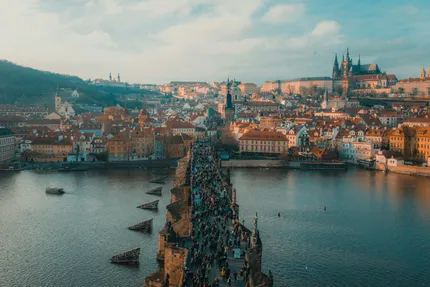
City trip to Prague
Czech RepublicPrague, the capital of the Czech Republic, is a city rich with history, stunning architecture, and vibrant culture. Known for its well-preserved medieval core and gothic churches, the city boasts numerous attractions such as the iconic Charles Bridge, Prague Castle, and the Astronomical Clock, which is one of the oldest operating timepieces in the world. The atmosphere of Prague is a blend of ancient tradition and modern creativity, with cobbled streets, impressive art collections, and a robust music scene that thrives in its pubs, clubs, and classical concert halls.
The Vltava River adds to the city's charm, splitting the city into sections that are perfect for leisurely exploration, especially on foot. The city's cafés offer a cozy setting to enjoy Czech specialties, including famous pilsner beers and hearty local cuisine, providing travelers with a taste of genuine Bohemian life.
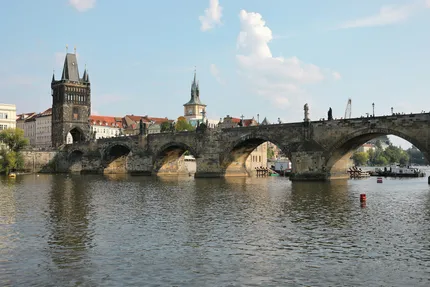
Charles Bridge
An iconic historic bridge adorned with statues, offering picturesque views of Prague's skyline. It's a bustling area filled with artists, musicians, and tourists passersby.
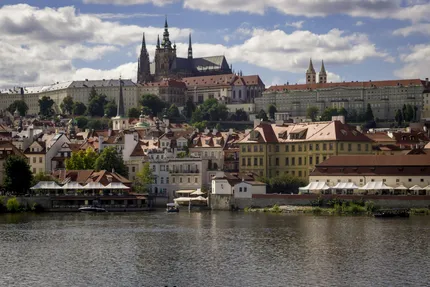
Prague Castle
A massive castle complex with stunning architecture, including the gothic St. Vitus Cathedral. It offers expansive views and insights into the history and culture.
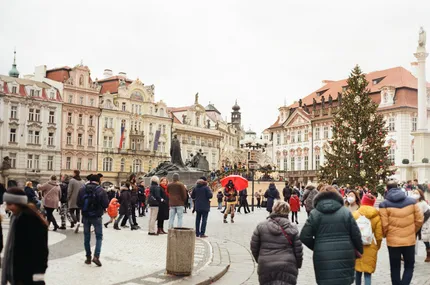
Old Town Square
A vibrant plaza known for its medieval Astronomical Clock, gothic churches, and historic buildings. It is the heart of Prague and a central meeting place.
Prague appeals to a diverse array of travelers, especially those with a passion for history, architecture, and arts. It's ideal for solo adventurers looking to lose themselves in the winding lanes of the Old Town, or couples seeking a romantic getaway amidst scenic backdrops. Families can also find a wealth of educational opportunities and entertainment, such as visits to the Prague Zoo or exploring the interactive National Museum.
Foodies will appreciate Prague’s burgeoning culinary scene, tasting local and international flavors in atmospheric settings. Those interested in nightlife will find a lively and varied nightlife scene, from chic bars to lively nightclubs. Overall it is a city that serves many tastes and it is always worth to visit on a city trip.
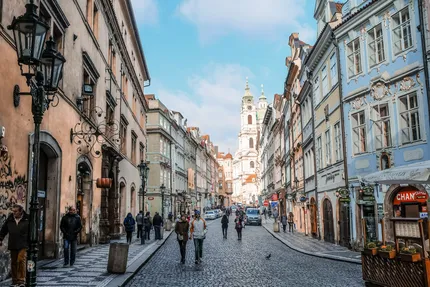
Best time to visit Prague
The best time to travel to Prague is during the spring (April to June) and early fall (September and October) when the weather is pleasant, and the city is not overly crowded with tourists, ensuring a more enjoyable experience.
More activities and things to see in Prague:
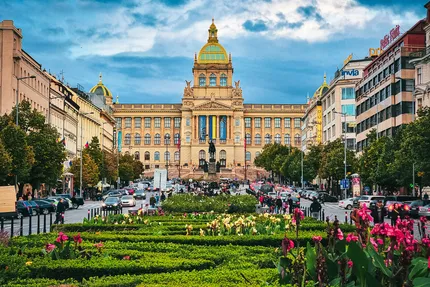
Wenceslas Square
A vibrant business and cultural hub with significant historical events. It’s lined with shops and cafes, ideal for shopping and dining.
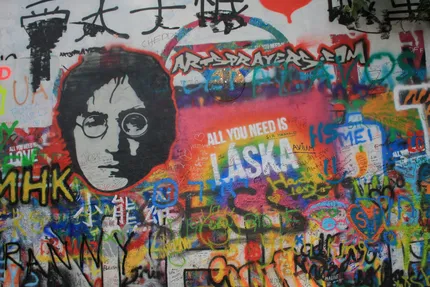
Lennon Wall
Once a place for John Lennon-inspired graffiti, it now stands as a symbol of peace and freedom, often evolving with new contributions.

Nightlife
Prague's nightlife is vibrant and diverse, offering historic pubs, chic cocktail bars, underground clubs, and jazz venues. Experience beer culture, riverfront parties, and late-night adventures in a lively, welcoming atmosphere.
Petrin Hill
A green space with beautiful gardens, offering panoramic views of the city. The hill is topped by a small Eiffel Tower-like observation tower.
Jewish Quarter
Rich in history, featuring the well-preserved Old Jewish Cemetery and several synagogues. It reflects the long-standing Jewish influence in Prague.
Dancing House
A modern architectural gem nicknamed ‘Fred and Ginger’. Its unique, curvy design contrasts the traditional skyline and offers a restaurant with views.
Vysehrad
An ancient fortress offering historic ruins, scenic parks, and an impressive view across the Vltava River. Known for its mythological significance and serenity.
National Theatre
A cultural institution hosting opera, ballet, and drama performances. The building itself is a masterpiece of neo-renaissance architecture.
Getting around in Prague
Prague is a city renowned for its highly efficient and affordable public transport system, which includes metro, trams, and buses, making it the best way to navigate the city. The metro system has three lines (A, B, C) covering most parts of the city efficiently. Trams are especially useful for reaching areas not serviced by the metro, and night trams run throughout the city once regular services stop. Prague is also quite pedestrian-friendly, especially in the historical center, which is compact and walkable. Biking is becoming more popular, with an increasing number of bike lanes and rental options. While driving in Prague is possible, it is not recommended due to narrow streets, parking limitations, and the efficient public transport system. Utilizing public transport or walking is often quicker and more convenient for both locals and tourists.
Getting to Prague
Prague is easily accessible by various means of transportation. The city is serviced by Václav Havel Airport Prague, located about 17 kilometers west of the city center. The airport offers frequent international flights, making it well-connected to major European and global cities. There are convenient bus and airport express services that connect the airport to Prague's city center. For train travelers, Prague's main railway station is a key European rail hub with excellent connections to cities like Berlin, Vienna, and Budapest. The station is located near the city center, offering quick access to public transport. Additionally, there are numerous long-distance bus services operating into Prague from across Europe, with Florenc being the main international bus terminal. These varied and robust transportation options make getting to Prague straightforward for travelers from virtually anywhere.